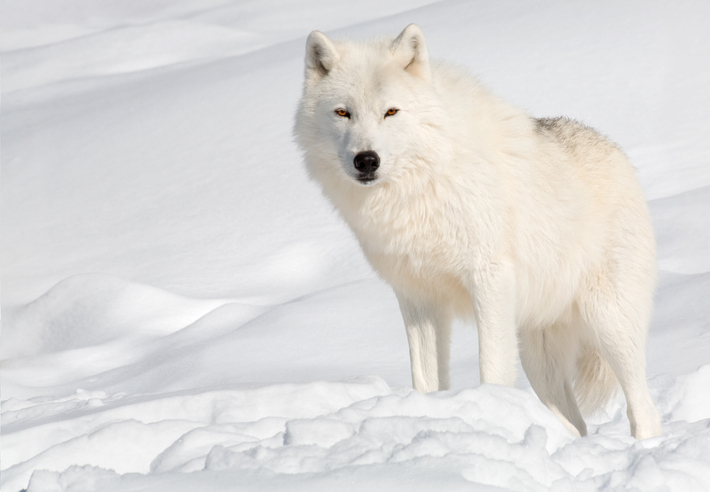Sure, wintertime brings us the holidays and snowmen, but apart from that most people do their best to escape the cold. Some animals, however, spend most of their lives where it’s winter nearly all year long. The Arctic Wolf, also called the white or polar wolf, lives in areas where the ground is permanently frozen in the Arctic tundra.
The Arctic Wolf lives and thrives under some of the most harsh conditions on the planet. Today we are going to learn about this amazing animal.
- Many wolves dig into the ground to sleep and escape the elements a bit, but the frozen ground makes that impossible for the Arctic Wolf. So they typically live in caves or under rocky outcrops for shelter.
- They have two distinct thick layers of fur to insulate them from the extreme cold.The outside layer gets thicker for winter to provide added protection as winter comes. The inside layer covers the skin closely and acts like a waterproof barrier to keep their skin dry and warmer.
- The Arctic Wolf has physically adapted to surviving harsh weather in several ways, like having small ears. Having smaller ears prevents excess heat loss through the thin skin of their ears, helping them stay warmer.
- They have paws that are densely padded, which not only offers protection from the cold, but improves their grip on icy, frozen surfaces. Their paws also have dense fur between the toes to keep them warmer as they walk through the snow.
- Food can be quite scarce, especially during the dead of winter. So they can eat up to 20 pounds of meat in a single setting. This allows them to eat as much as possible when it’s available, since they never know when they’ll get a chance to eat again.
- Because they live in the Arctic Circle, they not only live in extreme cold, but in darkness for months on end! This is because they make their home in areas where the tilt of the earth creates extreme seasons where the sun doesn’t fully rise during the winter.
- While they can live alone, it is more common for them to live and hunt in small packs. This helps them more effectively hunt prey, and offers them some protection from the environment.
- They communicate through vocalizations as well as body movement and the positioning of their tails. They have a hierarchy in their packs with a leader and less dominate members that help with hunting and protecting kills.
As you can tell, the Arctic Wolf is a dynamic animal that is well adapted to the harsh environment it calls home. You never know, you might get to see one of these magnificent fellows for self on your next visit!
Ready to visit the park? Find everything you need to plan your trip here.

